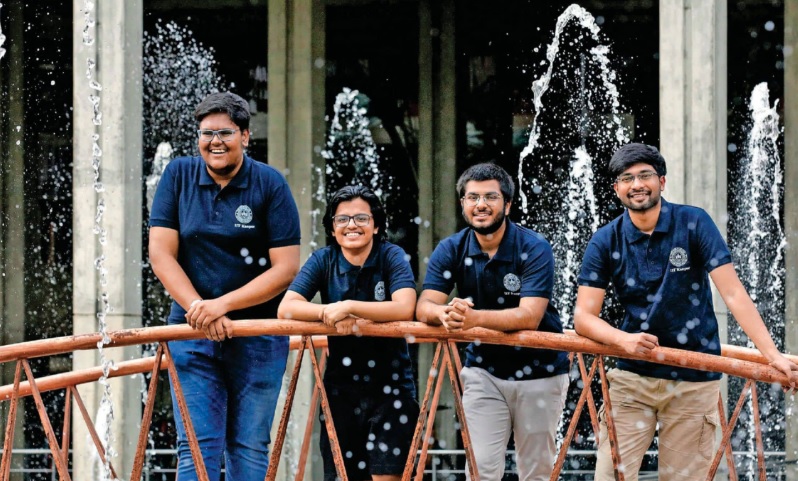
Imagination can run wild in a classroom, but it finds wings at the flight laboratory of the Indian Institute of Technology Kanpur. Inside, half a dozen training aircraft are parked in the hangar. Apart from an airstrip, IIT Kanpur boasts three helipads, too. No other institute boasts such a facility, says Prof G.M. Kamath, head of the department of aerospace engineering, IIT Kanpur. Thanks to the lab, students here get hands-on training.
"We get pilots to fly these aircraft. It benefits students as they can do experiments based on the manoeuvres," says Kamath. "This helps the students get a feel of the aircraft and helps them design better aircraft."
The flight laboratory runs courses in flight testing, wherein students collect, analyse and evaluate performance and handling qualities of the airplanes. And so, students from across the country-from the Punjab Engineering College (PEC) Chandigarh to IIT Bombay, IIT Kharagpur, IIT Madras and the Madras Institute of Technology-flock to the lab. A few years ago, students from the Nanyang Technological University Singapore also visited the lab.
"Close to 300 students from outside come here every year for a 10-day course," says Kamath.
The flight lab is closely monitored, audited and certified by the Directorate General of Civil Aviation. On prominent display is the HANSA-3, the first indigenously produced composite aircraft in India. Designed by the National Aerospace Laboratories in Bengaluru, the aircraft carries fibre optic sensors developed by IIT Kanpur's aerospace engineering department. The sensors-each as thin as a hair strand-help monitor the structural health of the aircraft for five to 10 years.
"One can monitor whether the aircraft went through some kind of turbulence or if it had a hard landing," explains Kamath. "Each and every aspect of the flight can be monitored."
This story is from the {{IssueName}} edition of {{MagazineName}}.
Start your 7-day Magzter GOLD free trial to access thousands of curated premium stories, and 9,000+ magazines and newspapers.
Already a subscriber ? Sign In
This story is from the {{IssueName}} edition of {{MagazineName}}.
Start your 7-day Magzter GOLD free trial to access thousands of curated premium stories, and 9,000+ magazines and newspapers.
Already a subscriber? Sign In

What Will It Take To Clean Up Delhi Air?
IT IS ASKED, year after year, why Delhi’s air remains unbreathable despite several interventions to reduce pollution.

Trump and the crisis of liberalism
Although Donald Trump's election to a non-consecutive second term to the US presidency is not unprecedented—Grover Cleveland had done it in 1893—it is nevertheless a watershed moment.

Men eye the woman's purse
A couple of months ago, I chanced upon a young 20-something man at my gym walking out with a women’s sling bag.

When trees hold hands
A filmmaker explores the human-nature connect through the living root bridges

Ms Gee & Gen Z
The vibrant Anuja Chauhan and her daughter Nayantara on the generational gap in romance writing

Vikram Seth-a suitable man
Our golden boy of literature was the star attraction at the recent Shillong Literary Festival in mysterious Meghalaya.

Superman bites the dust
When my granddaughter Kim was about three, I often took her to play in a nearby park.

OLD MAN AND THE SEA
Meet G. Govinda Menon, the 102-year-old engineer who had a key role in surveying the Vizhinjam coast in the 1940s, assessing its potential for an international port

Managing volatility: smarter equity choices in uncertain markets
THE INDIAN STOCK MARKET has delivered a strong 11 per cent CAGR over the past decade, with positive returns for eight straight years.

Investing in actively managed low-volatility portfolios keeps risks at bay
AFTER A ROARING bull market over the past year, equity markets in the recent months have gone into a correction mode as FIIs go on a selling spree. Volatility has risen and investment returns are hurt.